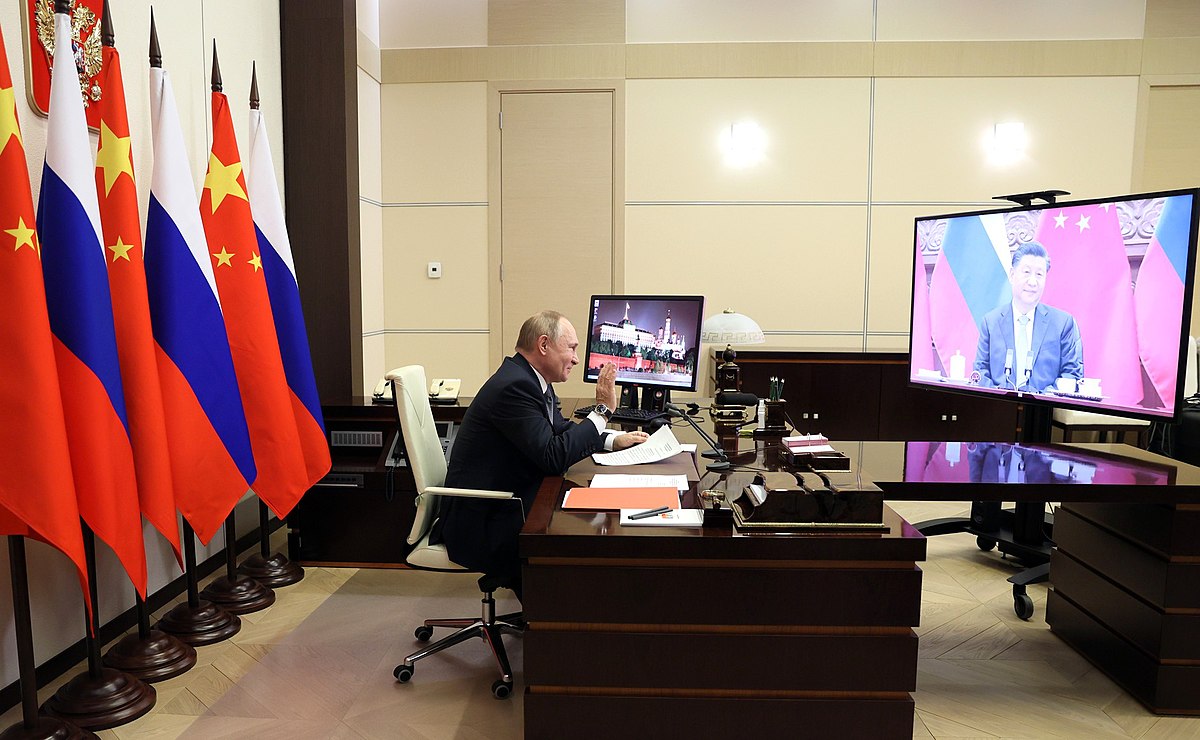 Presidents Putin and Xi meeting last December | Credit: Presidential Executive Office of Russia
Presidents Putin and Xi meeting last December | Credit: Presidential Executive Office of Russia
Flocking Together or Apart: The China-Russia Partnership
Before the war on Ukraine started, China had been developing closer ties with Russia. Such closeness was displayed last month with Russia and China’s joint statement affirming their partnership on the Belt and Road Initiative (BRI), the Arctic, and opposition to further NATO expansion. Russia also secured a 30-year deal to sell natural gas to China in exchange for Euros, providing a financial line for Russia if Europe sanctions its energy sector. Such communication caused many to interpret the statement as “a bid to make the world safe for dictatorship,” where both nations move to end what they perceive as an American-led order and one where both governments can thrive. However, recent events highlight the limits of their relationship, possibly foreshadowing how the relationship between the two powers could falter.
China and Russia are currently enjoying closer relations with each other than at any time since the Sino-Soviet split in 1960. Economic ties have deepened since 2014, when China purchased Russian oil after Western sanctions were imposed in retaliation for Russia’s seizure of Crimea. Russian policymakers see China not primarily as a threat, but as an opportunity to hedge its position, particularly as the economy becomes further isolated due to European sanctions. Both nations have conducted joint military exercises, with the most recent being a joint naval exercise in February in the northern Indian Ocean. Additionally, both appear to have mutual interests given their hostility towards the international order, ironically stating in February, “[China and Russia] oppose the abuse of democratic values and interference in the internal affairs of sovereign states under the pretext of protecting democracy and human rights…”
At face value, their partnership appears mostly solid throughout Russia’s invasion of Ukraine as Chinese media shared Russian disinformation on Ukrainian biolabs, blamed the West for inciting tensions, and avoided implementing sanctions on the Russian economy. Recently, U.S. intelligence revealed that Russia asked for military assistance as the war with Ukraine is stalling. However, as China is starting to face a more hostile West over its partnership with Russia, such tensions will demonstrate the limits of their alignment.
For starters, the Chinese foreign policy establishment was caught off guard by Russia’s invasion, leaving it unprepared for the international reaction. With this invasion, China has been forced into a diplomatic corner as it tries to remain close with Russia without losing its lucrative Western ties. Both countries accept their respective need for a sphere of influence, but Russia’s war with Ukraine could force Chinese firms to take sides in the conflict, especially if they sell to Russian firms. To that end, Chinese firms have been purchasing agricultural goods and fuel from Russia but are refraining from helping Russian evade sanctions for fear of losing access to dollar-denominated financial markets. China does want to limit NATO expansion, though not to the point of war which can damage its own international standing and economic growth.
Even if Ukraine and Russia agree to a peace deal in the near future, it is possible that China and Russia could still converge as both nations see Europe and the U.S. as rivals. There could even be cooperation to build an “anti-dollar axis,” developing an economic and financial system that is largely separate and can fully compete with the Western equivalent. However, as close cooperation increases, there comes a point when interests collide and can reveal tensions between the two nations, as both consider themselves to be great powers. Further economic cooperation could quickly favor and become dependent on China, a facet that would be unacceptable for Russian elites. Their respective pursuits of a sphere of influence, possibly in either the Arctic or Central Asia, can lead both to distrust each other as they seek to expand their global influence. If both see these regions as part of their respective spheres, the tension between the countries’ competing goals may lead to a break in collaboration – and a possible opening for the U.S.
In the short term, the United States and Europe cannot force either Russia or China apart from each other. Unless if there is a radical change in Russia’s internal politics, it remains highly unlikely that both Europe and the U.S. can lure Russia away from its partnership with China. However, the U.S and its international partners can encourage that change by developing a bigger carrot: a system of incentives beyond just easing sanctions, but instead presenting a wholistic system that allows Russia to enjoy the benefits of aligning with the West (possibly by an association agreement with the EU). Currently Russia’s invasion of Ukraine precludes the realization of this option, but a long-term plan to attract and integrate Russia into a better system doing things could ultimately help spark the change necessary to transform Russia into a partner instead of a rival.





